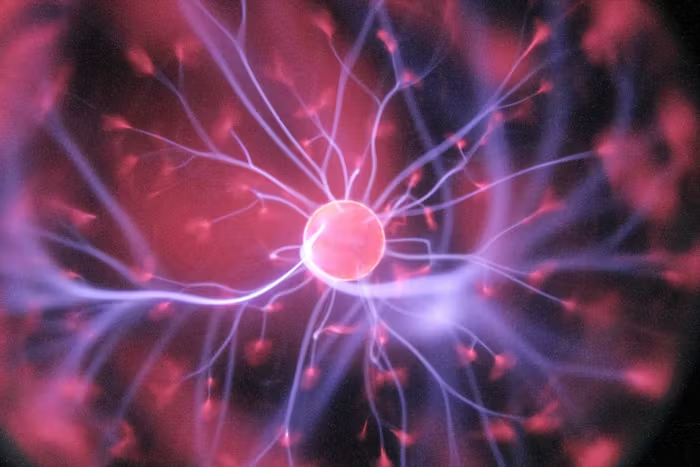The intersection of neuroscience and psychology is transforming our understanding of the human mind. Traditionally, psychology relied on behavioral observations to infer mental processes. However, advancements in neuroscience have provided tools to directly study the brain’s structure and function, offering unprecedented insights into how we think, feel, and behave.
This article explores how neuroscience is revolutionizing psychology, shaping therapy, improving diagnoses, and unlocking mysteries of the mind. Whether you’re a professional, a student, or a curious reader, understanding this transformation is crucial in grasping the future of mental health and cognitive sciences.
The Connection Between Neuroscience and Psychology
Psychology focuses on understanding human behavior, emotions, and thought processes, while neuroscience examines the biological mechanisms behind these phenomena. The two disciplines are deeply intertwined. By studying the brain, neuroscientists can explain the “why” behind psychological principles, enhancing both theoretical knowledge and practical applications.

Key Technologies Driving the Change
- Functional Magnetic Resonance Imaging (fMRI):
fMRI measures brain activity by detecting changes in blood flow, allowing researchers to observe which brain regions activate during specific tasks or emotions. - Electroencephalography (EEG):
EEG tracks electrical activity in the brain, helping psychologists understand states like sleep, attention, and emotional arousal. - Transcranial Magnetic Stimulation (TMS):
This non-invasive technique stimulates or inhibits brain regions, offering insights into their functions and therapeutic potential.
These tools bridge the gap between brain activity and psychological phenomena, leading to groundbreaking discoveries.
How Neuroscience is Shaping Psychology
1. Redefining Mental Disorders
Neuroscience is transforming how we understand and treat mental health conditions. Disorders like depression, anxiety, and schizophrenia are no longer viewed purely as emotional or cognitive dysfunctions. Instead, they are seen as results of neurological imbalances.
Example:
- fMRI studies have shown that depression is linked to reduced activity in the prefrontal cortex and overactivity in the amygdala. This knowledge has led to treatments like Transcranial Magnetic Stimulation, targeting these specific brain regions.
2. Personalized Therapy
Traditional therapy often relies on trial and error to find what works for an individual. Neuroscience is paving the way for more personalized approaches. By analyzing a person’s brain activity, psychologists can recommend tailored interventions, from cognitive-behavioral therapy to specific medications.
Impact:
- Neurofeedback, a therapy that trains individuals to regulate brain activity, is gaining popularity in treating conditions like ADHD and PTSD.
3. Enhancing Cognitive Behavioral Therapy (CBT)
CBT focuses on changing negative thought patterns to improve behavior and emotions. Neuroscience has validated the effectiveness of this therapy by showing how it physically alters brain structure.
Research Insight:
- Studies reveal that CBT can increase gray matter in areas associated with emotional regulation, proving that therapy isn’t just psychological but also biological.
4. Understanding Learning and Memory
How do we learn? Why do we forget? Neuroscience answers these age-old questions by examining synaptic plasticity — the brain’s ability to form and reorganize connections.
Applications in Psychology:
- Insights into neuroplasticity have influenced educational psychology, leading to teaching methods that align with how the brain processes information.
Example:
- Spaced repetition, a learning technique, is based on neuroscience research showing that repeated exposure strengthens neural connections.
5. Unveiling the Neural Basis of Emotions
Emotions have always been a core focus of psychology. Neuroscience reveals how specific brain regions, like the amygdala (fear) and prefrontal cortex (decision-making), influence emotional responses.
Impact on Therapy:
- This understanding helps therapists guide clients in managing emotional triggers more effectively.
Neuroscience and Behavior: A New Era
Psychology has traditionally categorized behavior into learned and innate. Neuroscience adds depth by showing how genetics, environment, and brain chemistry intersect to influence behavior.
Case Study:
- Research on mirror neurons, which fire both when we act and when we observe others acting, has deepened our understanding of empathy and social behavior. These findings are shaping therapies for autism spectrum disorders.
The Role of Neuroscience in Addiction Treatment
Addiction is now seen as a brain disease rather than a moral failing. Neuroscience reveals how addictive substances hijack the brain’s reward system, making recovery challenging but achievable.
Breakthroughs:
- Brain imaging shows that addiction alters the prefrontal cortex, impairing decision-making.
- Therapies like TMS and neurofeedback aim to reverse these changes, offering hope for long-term recovery.
Challenges and Ethical Considerations
While neuroscience offers incredible potential, it also raises ethical questions.
- Privacy Concerns:
Brain imaging could reveal personal information, sparking debates about consent and data security. - Over-Reliance on Technology:
The integration of neuroscience into psychology must complement, not replace, traditional therapeutic approaches. - Accessibility:
Advanced technologies like fMRI and TMS are costly, limiting their availability to many patients.
The Future of Neuroscience in Psychology
As technology advances, the integration of neuroscience and psychology will only deepen. Potential future developments include:
- AI-Powered Brain Analysis:
Machine learning algorithms could analyze brain data to predict mental health risks and recommend interventions. - Portable Neurotechnology:
Wearable devices may allow real-time brain monitoring, enabling immediate mental health support. - Gene Therapy:
By understanding the genetic basis of mental disorders, neuroscience could lead to targeted treatments that address root causes.
Quote from Expert:
“Neuroscience is not replacing psychology; it’s enriching it. Together, they form a holistic approach to understanding and improving the human experience.”
How to Stay Informed
For those interested in how neuroscience is changing psychology:
- Follow journals like Nature Neuroscience and Psychological Science.
- Take online courses on platforms like Coursera or edX.
- Attend conferences or webinars on neuropsychology.
The fusion of neuroscience and psychology marks a turning point in our understanding of the mind. By uncovering the biological underpinnings of thoughts, emotions, and behaviors, neuroscience is making psychology more precise, effective, and impactful.
Whether you’re navigating mental health challenges or seeking to understand human nature, this interdisciplinary approach offers hope and insight. As these fields continue to evolve, they promise to unlock even more mysteries of the brain, paving the way for better mental health and a deeper understanding of ourselves.
Embrace the change — because the future of psychology is neural.














